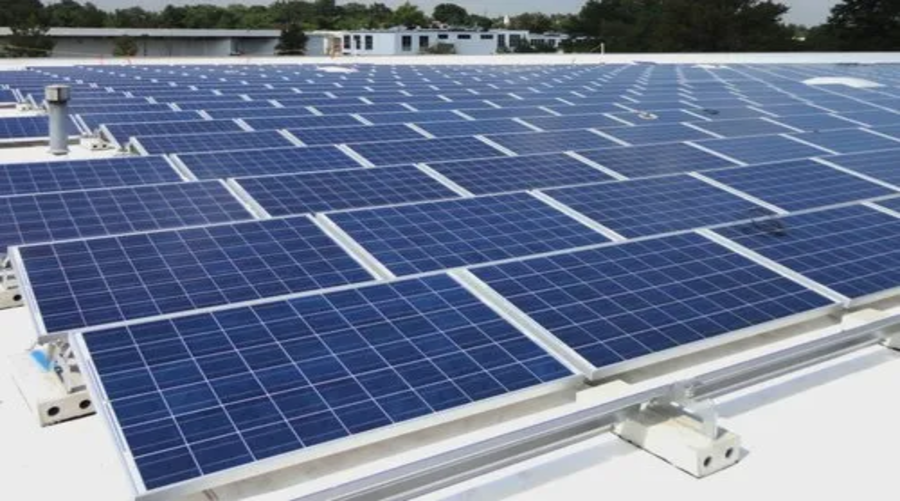| Project Name:
Consultancy Services for Environmental and Social Assessment (ESA) of 428.22 kWp Industrial Rooftop Solar Project to be built on the Roof-top of KA Design Limited (KADL). |
| Country: Bangladesh |
| Project Duration: 03/2020 to 07/2020 |
| Description of Project:
Bangladesh receives an average daily solar radiation in the range of 4-5 kWh/m². Keeping that in mind the K A Design Limited (KADL) proposed a project o f a 428.22 KWp rooftop solar project on the rooftop. In the proposed system two main equipment will be used which are solar panels and inverters. Sun shines on the solar panels to generate DC electricity. The DC electricity produced from the solar panel will be converted to 415 V 3-phase AC using the inverters. Then the energy will be fed into the bus bars of industry. A zero-export controller will be used to ensure “net zero export” The aggregated installed capacity of the project will be 428.22 KWp. The proposed project investigates renewable energy-based rural electrification system in Bangladesh, with a specific focus on the Industrial Rooftop Solar System experiences. Specific references are made to solar PV technologies implemented under publicly supported programme. The study is also providing an examination and assessment of the environmental & social impacts of the project. The main purpose of this ESA is to evaluate the impact of project location from the environmental and social point of view along with possible measures to be included in an Environmental and Social Management Plan (ESMP) to minimize the potential impacts resulting from project activities during the implementation and operation phase of the project. The DSCL was engaged by Fortis Group (hereunder referred to as the Client) to carry out the environmental quality assessment (sampling, testing & analysis of air quality, surface water quality, groundwater quality, soil quality and noise level measurement); organize and conduct public consultation under the leadership of the Client; and also preparation of ESA report (including Environmental and Social Management Plan (ESMP), Environmental Monitoring Plan and cost estimates for the proposed mitigation measures and monitoring plan. |
| Description of Actual Services Provided by Staff of this Firm in the Assignment:
Scope of Services included – § Collection of necessary information and relevant data for preparing Environmental and Social Assessment (ESA) Report for 428.22 KWp Industrial Rooftop Solar Project. § Collection of primary data, including extrapolation environmental features on proposed project design, tree inventories, location and measurement of socio-cultural features adjoining the proposed project area. § Collection of the secondary data on macro-environmental setting, such as, climate (temperature, rainfall, humidity, & wind speed), physiography, geology etc. from secondary sources. § Review of the environmental legislation, regulatory policy & guidelines, and considerations relating to the implementation of the project. § Review of the policy, legal and administrative framework for ESA process. § Carry out the environmental and social impact assessment up to 1km area on each side of the project. § Establish the environmental and social baseline conditions of the project. § Assessment of the baseline environmental and social condition through field surveys and investigation (sampling & testing). § Impacts assessment of ecologically sensitive areas (e.g. wildlife sanctuaries, biosphere reserve, and protected places). § Environmental quality assessment of terrestrial and aquatic ecology, soil quality (parameters – oil & grease, arsenic), surface water quality (parameters – pH, TDS, DO, BOD, COD), groundwater quality (parameters – pH, Arsenic, TDS, Alkalinity, Fe, Chloride), air quality (parameters – SPM, Sox, NOx, CO, PM10, PM2.5), and noise level to prepare a baseline database. § Assess the existing physical environment, biological environment, and socio-economic environment. § Physical environment covered different physical natural features and included major parameters & factors, such as, climate (temperature, rainfall, humidity, wind speed, sunshine, & cloud coverage), ambient air quality, noise level, physiography, topography, geology & hydrology, water resources (surface & ground water), soil quality, agro-ecological zones (soil condition, & floodplain), seismicity, etc. § Biological environment covered factors related to life and included major features, such as, bio-ecological zones (major rivers), ecosystem, flora & fauna, protected areas & red book species, etc. § Socio-economic environment covered anthropological factors, such as, demography, age, sex/gender, household, nutrition, religion, ethnicity, land use ownership, cropping pattern, occupational pattern, livelihood, income, infrastructure, settlement plan & housing, transport & communication, sources of drinking water, sanitation facility, poverty, health, recreational activities, archaeological & cultural heritage, climate change & natural disaster, environmental & social hotspot, etc. § Prepare socio-economic profile and impact on the community. § Identification and assessment of potential impacts on the natural and human environment in the project area during pre-construction; construction and post-construction phase of the project. § Identification of mitigation measures for minimizing the effect of the negative impacts and enhancement measures for increasing the benefits of the positive impacts. § Organize public consultation to explain the local environmental & social conditions and pertinent impacts. § Public consultation was conducted to understand the people’s perception, view and suggestion on the project. § Assessment of environmental, economic, and social benefits that will contribute towards long-term global sustainability. § Preparation of the recommendations and conclusions in order to operate the project works in an environmentally safe and sound manner. § Preparation of the ESA Report, in compliance with the guidelines of the Department of Environment (DOE) of the Government of Bangladesh, JICA Guidelines for Loan Aid (Japan Bank for International Cooperation Guidelines for Confirmation of Environmental and Social Considerations, April 2010) and World Bank OP 4.01 (Environmental Assessment) guidelines. § Preparation of the TOR (Terms of Reference) for site clearance by the DOE. § Assist the Client in coordination and liaison with the DOE to organize presentation and facilitate the process of EIA approval and thereby issuance of Environmental Clearance Certificate (ECC) for the proposed solar power plant. § Successfully Received Site Clearance (SC) and Environmental Clearance Certificate (ECC) from Department of Environment (DoE) and approval from IDCOL. |

